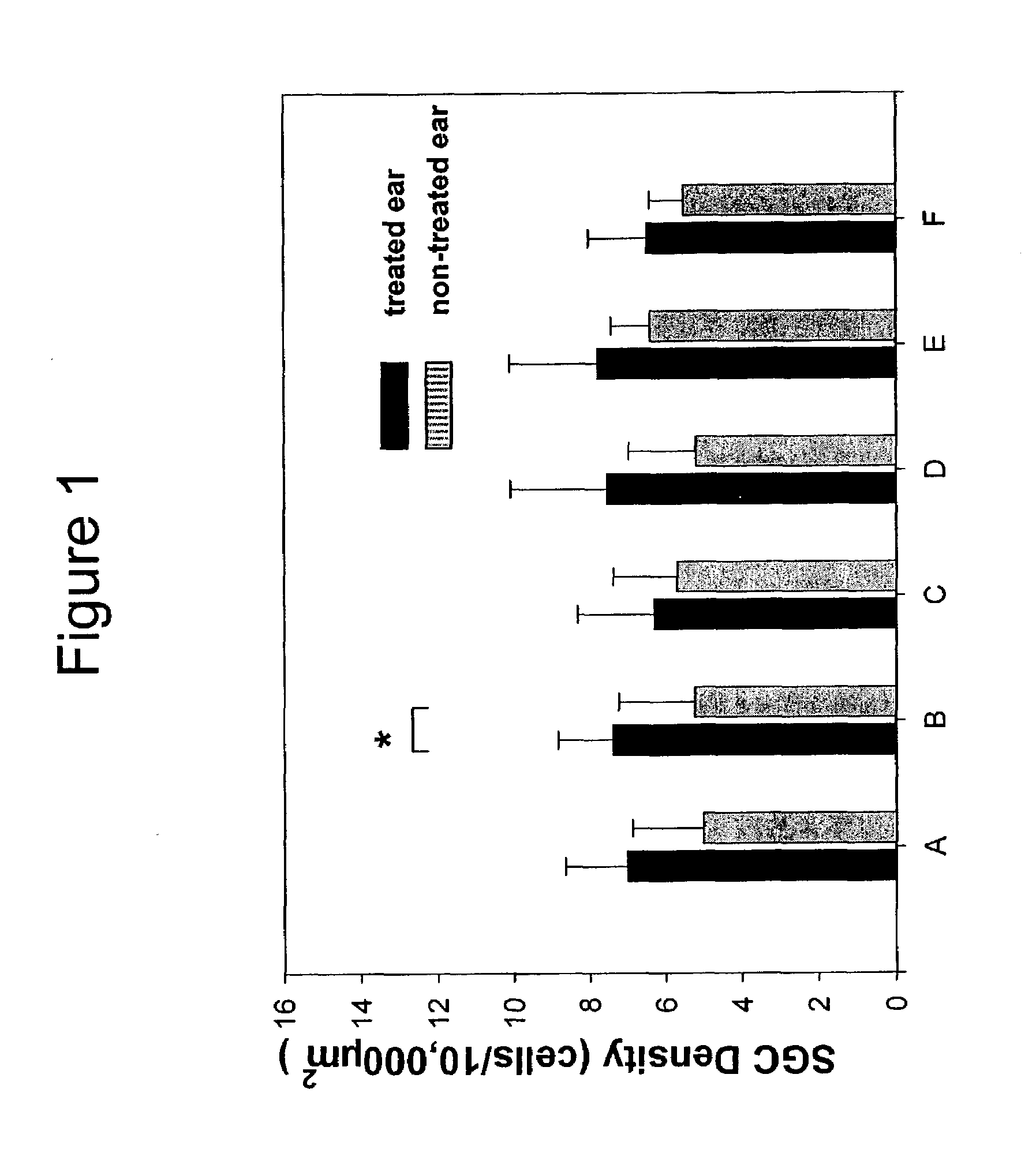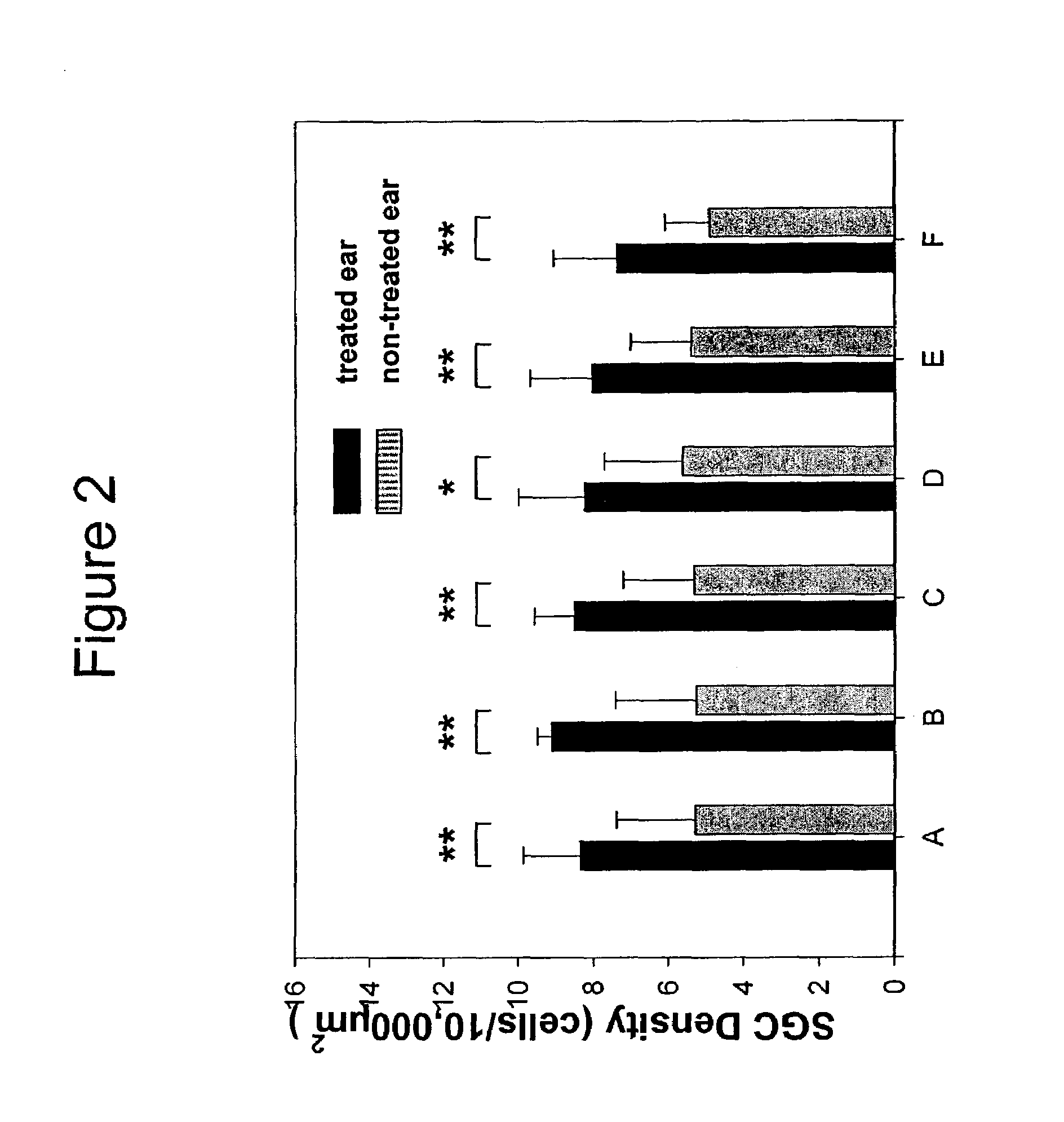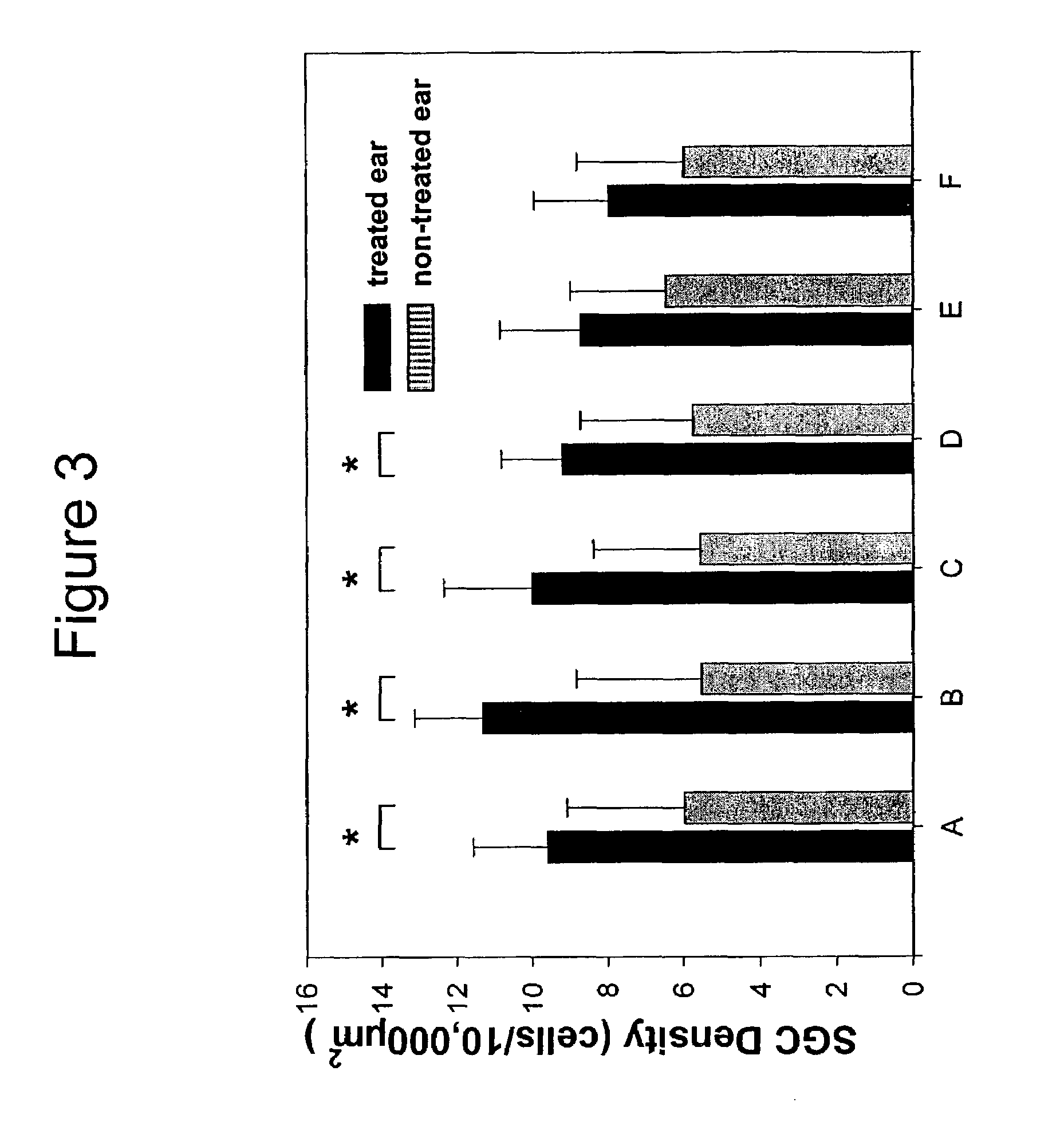Auditory nerve protection and re-growth
a technology of auditory nerves and nerves, applied in the direction of artificial respiration, anti-medical ingredients, therapy, etc., can solve the problems of affecting education and future employment opportunities, affecting the quality of life and communication, and increasing medical costs, so as to maintain the viability of spiral ganglion cells
- Summary
- Abstract
- Description
- Claims
- Application Information
AI Technical Summary
Benefits of technology
Problems solved by technology
Method used
Image
Examples
example 1
Protection of Spiral Ganglion Neurons GDNF Gene Therapy and Electrical Stimulation
[0126]This Example describes the cumulative effect of the GDNF transgene delivered by adenoviral vectors (Ad-GDNF) and ES on the spiral ganglion cells (SGCs) after aminoglycoside / diuretic-induced ototoxicity that eliminated the inner hair cells.
[0127]A. Methods
Animals
[0128]Twenty-four pigmented guinea pigs (240-380 g) were used in this study. Animals were outbred in the Elm Hill supplier colony. All animal experiments were approved by the University Committee for the Use and Care of Animals and were performed using accepted veterinary standards. The University of Michigan is fully accredited by the Association for Assessment and Accreditation of Laboratory Animal Care International (AAA-LAC International).
General Experimental Paradigm and Experimental Groups
[0129]Animals were divided into three treatment groups: ES alone (N=7), GDNF transgene delivered by adenoviral vectors (Ad-GDNF) alone (N=7) or ES+...
example 2
Regrowth of Auditory Nerve Peripheral Processes with Chronic Cochlear Electrical Stimulation
[0152]This example describes the regrowth of peripheral process under chronic cochlear electrical stimulation.
[0153]Guinea pigs (Elm Hill) received baseline click evoked auditory brain stem response (ABR) measures and were then (day 0) bilaterally deafened with systemic kanamycin (400 mg / kg SQ) & ethacrynic acid (40 mg / kg IV). Following ABR to confirm a greater than 60 dB threshold shift (on day 4) a 3-T single ball electrode was inserted into scala tympani through the round window. The 5-T ground terminated in the bulla. Beginning on day 7 and continuing for 2 weeks, experimental subjects (n=7) received continuous pulsatile, biphasic, charge balanced electrical stimulation from a battery powered, wearable stimulator. Stimuli were provided at a 40% duty cycle. EABR P1 thresholds were monitored to assure electrode function. The control group (n=6) were implanted but not stimulated. At day 21, ...
example 3
Effect of Systemic Treatment with Antioxidant on Auditory Function in Deafened Guinea Pigs
[0155]This Example describes the effect of treatment with systemic antioxidants on deafened guinea pigs. Twenty-four guinea pigs were divided into 3 groups of 8 each. All subjects underwent aseptic surgery to implant an intracochlear Pt—Ir stimulating electrode, epidural recording electrodes and intracochlear cannula. Two groups were deafened by intracochlear infusion of 10% neomycin for 2 days (mini-osmotic pump model 2002, Alzet, Palo Alto, Calif., USA, flow rate: 0.5 μl / hr). The third normal hearing, control group received intracochlear artificial perilymph. Following deafening 8 animals received daily IP injections of trolox (10 mg / kg) and ascorbic acid (200 mg / kg) for 4 weeks. Deafened-untreated and hearing-control groups were injected with the same volume of saline for 4 weeks. Electrically evoked auditory brainstem responses, eABRs, were recorded on day 5, 9, 16, 23, 30, 37 and 44.
[0156]...
PUM
| Property | Measurement | Unit |
|---|---|---|
| Length | aaaaa | aaaaa |
| Length | aaaaa | aaaaa |
| Time | aaaaa | aaaaa |
Abstract
Description
Claims
Application Information
 Login to View More
Login to View More - R&D
- Intellectual Property
- Life Sciences
- Materials
- Tech Scout
- Unparalleled Data Quality
- Higher Quality Content
- 60% Fewer Hallucinations
Browse by: Latest US Patents, China's latest patents, Technical Efficacy Thesaurus, Application Domain, Technology Topic, Popular Technical Reports.
© 2025 PatSnap. All rights reserved.Legal|Privacy policy|Modern Slavery Act Transparency Statement|Sitemap|About US| Contact US: help@patsnap.com



